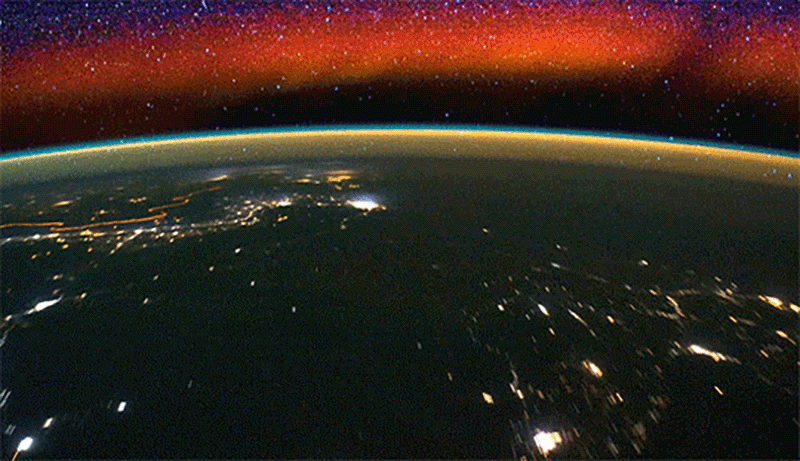New York City’s Invisible ‘Airglow’ Comes Alive in Infrared
Airglow, not to be confused with auroras, is a colorful atmospheric phenomenon typically visible to typical cameras only in very dark and clear night sky conditions. The sky above New York City definitely doesn’t qualify as “dark,” but that doesn’t mean it’s impossible to photograph airglow, as Ty Buckley has shown in new YouTube videos.
While invisible to the naked eye above the Big Apple, Buckley used an industrial infrared camera (IR) to record the sky in shortwave IR wavelengths, and the results are stunning.
“It is 1:30 in the morning and you wouldn’t know it from the perfectly clear sky, but there is an insane light display going on above my head right now,” Buckley explains with the backdrop of a blank night sky and the bright New York City skyline behind him.
“Airglow occurs when atoms and molecules in the upper atmosphere, excited by sunlight, emit light to shed their excess energy. Or, it can happen when atoms and molecules that have been ionized by sunlight collide with and capture a free electron,” NASA explains.
“In both cases, they eject a particle of light — called a photon — in order to relax again. The phenomenon is similar to auroras, but where auroras are driven by high-energy particles originating from the solar wind, airglow is energized by ordinary, day-to-day solar radiation.”

Unlike auroral displays, which are “episodic and fleeting,” airglow is ever-present. However, it appears faint on typical cameras, even in extremely dark areas. The colors are fainter than auroras but can still be quite spectacular. Airglow can be red, green, purple, and yellow.
A typical camera operating in visible wavelengths can capture airglow in the right conditions. However, even when airglow doesn’t appear in photos, that doesn’t mean it isn’t present, as Buckley shows.
Buckley overcame numerous hardware and software challenges to capture the remarkable images for his time-lapse footage, including doing some clever custom engineering on his specialized shortwave IR camera.
Buckley is working on some new projects with his camera, and people can stay up to date by subscribing to Buckley on YouTube.
Image credits: Featured image credit Ty Buckley